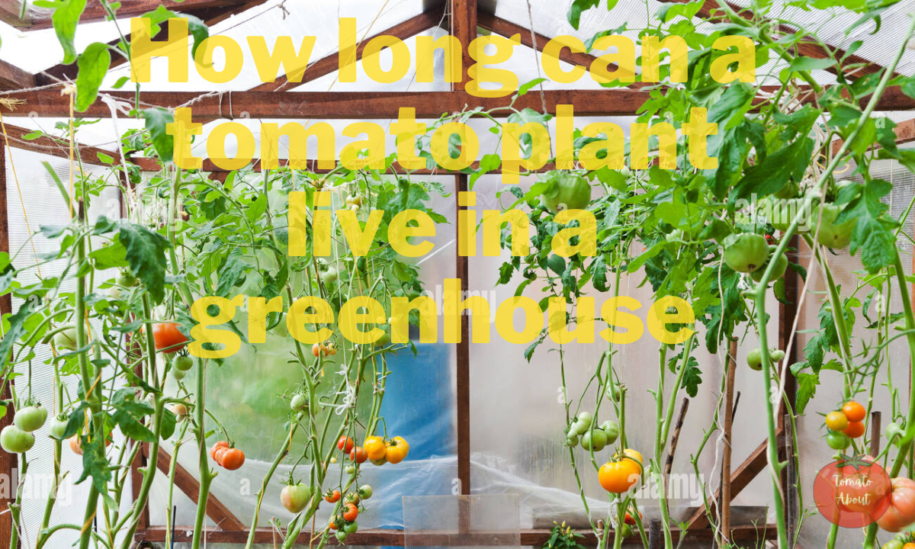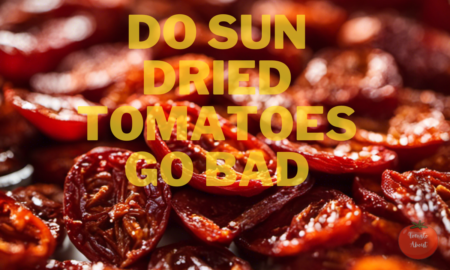Gardeners have always sought different ways to extend the growing season beyond its natural limits. While most crops come and go with the seasons, what if you could drive certain plants into near year-round production? Fortunately, For tomato lovers who are struggling with short outdoor growing seasons, greenhouses offer a controllable climate perfect for dramatically extending the lifespan of tomato plants. But Here the question arises, how long can a tomato plant live in a greenhouse?
With the right greenhouse set-up and attentive care, gardeners can reap bountiful harvests of fresh tomatoes nearly year-round. In this article, we’ll explore the key considerations for maximizing tomato longevity in greenhouses. Follow these tips to keep your tomato plants healthy, vigorous, and abundantly productive for season after season, no matter what the weather is doing outside your greenhouse walls.
So, how long can a tomato plant live in a greenhouse?
Well, with ideal conditions, tomato plants grown in a greenhouse can live and produce fruit for 12-18 months or longer. This far exceeds the typical outdoor lifespan limited by seasonal changes.
How do you take care of tomatoes in the greenhouse?
Growing tomatoes in a greenhouse isn’t much different from doing it outside. Fortunately, tomato plants are adaptable and easy to grow under greenhouse conditions. If you want to extend your growing season and get more crops per year, there are a few things you should do while growing tomato plants in a greenhouse
1)Select Disease-Resistant Varieties
The first step is choosing varieties tailored for greenhouse growth. Selecting cultivars labeled disease-resistant (DR) can help plants better cope with common tomato afflictions. Look for key terms indicating resistance like:
- VF – Verticillium and Fusarium resistance
- TMV – Tobacco Mosaic Virus resistance
- Leaf mold resistance
- Good disease-resistant choices include Burpee’s Super Sauce and Totem.
The compact growth of determinate types makes them great greenhouse candidates. Indeterminate cherry tomatoes like Sun Gold offer sustained harvests from vigorous vines, which is also ideal.
2) Provide Optimal Sunlight
Tomatoes are sun-loving crops. Therefore, Maximizing light is important for keeping productivity high as plants age. Rely on natural sunlight transmitted through the greenhouse glazing first and foremost.
To supplement, use adjustable T5 grow lights over each row of tomatoes. Aim to maintain a photoperiod of at least 12-14 hours daily.
Monitoring growth and fruiting helps determine optimal lighting over time. Consistent bright light keeps plants photosynthesizing robustly.
3) Maintain Ideal Warmth
Tomatoes thrive best around 75-85°F during the day and 60-65°F at night. Temperatures below 50°F can damage plants. A greenhouse should have a thermostatic natural gas heater and exhaust fans for climate control.
Use horizontal airflow fans for air circulation. Vents and shade cloths prevent overheating on sunny days. Providing optimal warmth reduces plant stress and extends tomato lifespan.
4) Control Humidity
The ideal humidity level for a greenhouse is 60-70% relative humidity. Higher humidity encourages disease, while low humidity causes issues like blossom end rot. So, Rely on vents, fans, and a cool mist humidifier to maintain the target range.
Monitoring humidity daily allows quick response if levels get too high. Take fast action at the first sign of disease.
5) Water Deeply and Regularly
Consistent moisture is required for tomato health and longevity. I recommend you use drip irrigation with tomato stakes to target water right to each plant’s roots.
Hand water if the soil ever becomes too dry. Tomato plants need about 1-2 inches of water per week. Proper moisture prevents plant stress.
6) Feed Plants Continuously
As heavy feeders, tomatoes rely on constant nutrition. Use aged manure as a soil base, and supplement with organic tomato fertilizer.
Also, monitor for deficiency signs and increase feeding rates for fruiting plants. Adequate nutrition prevents early decline.
7) Pruning
Without diligent pruning and training, greenhouse tomatoes can become a jungle. Remove old growth and use tomato trellises to support vines.
Frequent pruning helps maximize light exposure and sustain vigor in mature plants too. It’s essential for longevity.
8) Monitor Closely and Respond Quickly
Checking greenhouse tomatoes daily allows for catching issues early before spreading. Record any abnormalities and troubleshoot problems using diagnostic guides. Responding quickly maintains plant health.
9) Plan Ahead for Replacements
Despite best efforts, tomato plants decline after 12-18 months. Plan replacements by taking cuttings or starting seeds 2-3 months prior.
That way old plants are phased out as young ones hit peak production. Proper timing prevents gaps in the harvest.
Knowing When to Replace Plants
Even in ideal greenhouse conditions, tomato plants eventually decline and need replacement. Signs of aging include:
- Slowed growth
- Leaf yellowing and drop
- Reduced fruit set and quality
- Increased susceptibility to pathogens
Commercially, greenhouse tomato plants are generally replaced every 10-12 months. Hobby gardeners may get less than a full year of harvests in small greenhouses.
When productivity drops, take cuttings from vigorous plants to root new clones. Or transplant fresh seedlings for a new generation of productive plants. Time new plantings so mature fruiting plants are removed while new ones are coming into full production.
Can you grow tomatoes in a greenhouse in the summer?
Yes, tomatoes can be grown in a greenhouse in the summer. The controlled environment of a greenhouse allows gardeners to manage the temperature, humidity, soil moisture, and light exposure to provide ideal growing conditions for tomatoes during the summer months.
However, extra ventilation, shade cloths, and monitoring are needed to prevent overheating in the enclosed greenhouse environment during the hot summer months.
How do you keep tomato plants alive in the winter?
To keep tomato plants alive in a greenhouse during winter:
- Provide supplemental heating to maintain temperatures above 50°F
- Insulate the greenhouse and maximize sunlight exposure
- Use grow lights to ensure 12+ hours of daily light
- Monitor soil moisture and water regularly
- Increase feeding for plants actively producing fruit
- Prune and trellis to support plant health
Different ways to keep tomatoes alive in Greenhouse
Use portable containers
For a more flexible option, tomato plants can be grown in portable containers within a greenhouse over winter. Choose large containers to support root growth. Move plants out of the greenhouse temporarily if temperatures get too cold. Use 5-10 gallon buckets or other large containers on casters to easily move plants. Add drainage holes to prevent overwatering.
Use carts or trays to easily reposition plants under grow lights or into sunlight. With protection from freezing and wind, container-grown tomatoes can remain alive and productive through winter. Invest in Self-watering containers like Smart Pots or Earthboxes to allow for less frequent watering.
Use frost cloth and other coverings
In addition to greenhouses, other temporary coverings help protect tomato plants from frost and freezing. On cold nights, drape plants with frost cloth, floating row covers, plastic sheeting, or other breathable materials. Agribon or Reemay fabric row covers provide protection down to 28°F. Secure edges with weights.
Remove during sunny days to allow light and air circulation. For in-ground plants, construct low tunnels using hoops and plastic sheeting. Coverings prevent freeze damage and allow tomatoes to survive winter if properly managed.
Prune and stake plants
Prune back plants by 1/3 to 1/2 to remove dead growth and decrease transpiration. Stake and tie plants to support any fruit and prevent damage from winter winds.
Provide heat and lighting
Place container plants near a south-facing window or use grow lights to provide extra warmth and sunlight during winter months. Maintain temperatures above 55°F. Use Hang heat lamps or grow lights overhead to add warmth. You can also use LED full spectrum or grow lights.
Wrapping up
With this care, tomato harvests can continue nearly year-round. The limiting factor becomes the vigor and productivity of the plants, not the length of the outdoor growing season.
In a well-managed greenhouse, tomato plants can live and bear fruit for up to a year before needing replacement. This far surpasses the outdoor growing season in most temperate climates. With attention to plant health and environmental conditions, hobby gardeners can enjoy fresh homegrown tomatoes for months on end.



